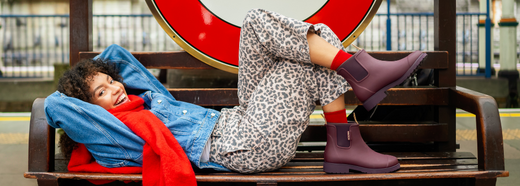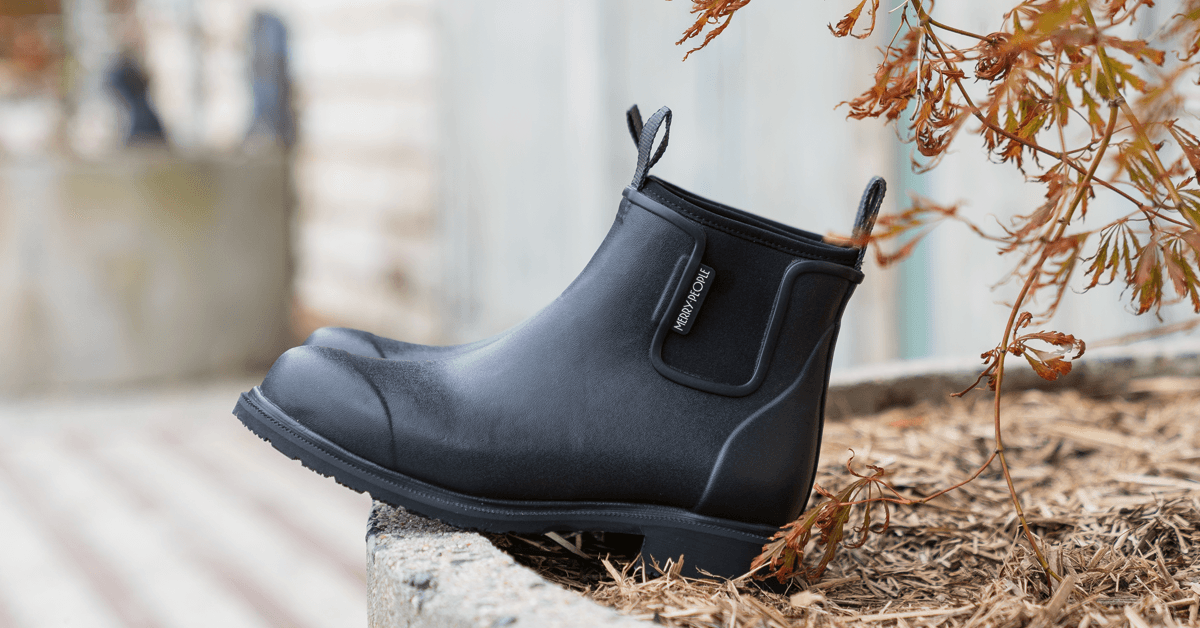Once winter sets in, you’ll need good boots to keep your feet warm and dry. Depending on where you stay there’s likely to be a great deal of snow or rain, which makes rubber boots a lifesaver, as they are waterproof and help you stay on your feet in wet, slushy environments. But you also don’t want your feet to freeze. This leads many people to ask, “Are rubber boots warm?”.
Yes, rubber boots are warm. Even unlined rubber boots provide decent insulation to trap heat and keep you warm in chilly weather. The design of most rain boots is best suited for mild conditions. But, if you plan to walk around in freezing conditions, you will need to go for insulated rubber boots.
How Warm Are Rubber Boots?
Rubber boots are more popular as one of the things we wear in the rainy season.
Both adults and kids will go out in their colorful rubber boots and stomp through huge puddles of water without worry. With a good pair of rubber boots, anyone can splash up a storm with abandon as they know their feet will stay dry.
But when winter comes, these puddles of water become frigid. Staying dry won’t be enough. You want to keep warm as well. Will even the best rubber boots manage to keep your toes frostbite-free if you spend the entire day walking around in the snow?
Unlined rubber boots will keep you warm enough if you’re dashing from your car into the house or grocery store. Yet, rubber alone is not enough to keep your feet warm for more extended stays in freezing conditions. In that case you may want to find rubber boots with extra insulation that can hold in a lot more heat.
Understanding Rubber Boot Insulation
If you only plan on wearing your rubber boots in the rainy season, then an unlined pair will be okay for the job. Going outdoors in the harsh winter months, though, requires a quality pair of insulated rubber boots. Why? When you walk around in your boots, your feet and the movement generate heat. But you will lose much of this warmth through the top of the boot and through the boot itself. That's where insulation comes in.
Although the rubber will keep some heat in, having an extra layer of insulation will increase your boot's ability to maintain a greater degree of warmth. It's important to understand that the insulation may not generate any heat. It only ensures that your body heat and the heat caused by friction stay inside the boot. So, the more heat you generate and the thicker insulation you have, the warmer your boot will become.
What Type Of Insulation Is In Your Winter Rubber Boots?
Once you figure out whether or not you need a warm rubber boot, the next thing is to decide what type of insulation will work for your unique needs. Let’s go through two of the most popular types of winter rubber boot linings.
Neoprene
How does this type of lining offer such excellent thermal insulation? Neoprene is a durable, soft, and flexible sponge rubber with excellent chemical resistance. Neoprene not only insulates your feet from moisture but also keeps out the cold. Neoprene has tiny nitrogen gas bubbles, which have very low thermal conductivity. Therefore, there is a significant reduction of heat transfer between your feet and the outside cold air or water.
Socks Or Liners
So, your pair of rubber boots seems to do everything well, except keep your feet warm. But you can easily wear a pair of liners or socks to boost the amount of retained heat. You’ll need a pair of socks that’s as high as your boots, like our quarter-height socks!
Rubber Boots And Snow
Rubber boots are an excellent substitute for leather in snowy conditions, as they don’t get salt-stained. Rubber boots also have a high level of traction, which makes them a safe option for working in wet, snowy, and slippery conditions.
Final Thoughts
Rubber boots are a natural wardrobe addition during the rainy season. You can march through puddles of muddy water with reckless abandon and not even worry about getting your feet wet. But when the ground gets freezing, you also need to worry about keeping your feet warm. If you get the right type of insulation for your boots, you’ll be able to keep your feet cozy in any type of weather.











